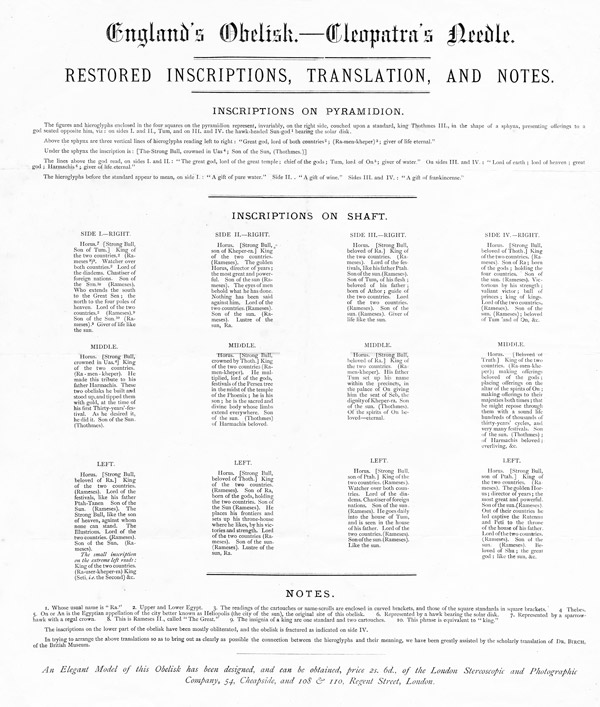_inscriptions.jpg)
CLEOPATRA'S NEEDLE
‘Cleopatra’s Needle’ is the name popularly given to the Egyptian obelisk standing beside the River Thames in London, on the Victoria Embankment. (The same name is often given to the Egyptian obelisk in Central Park in New York, and sometimes even to the Egyptian obelisk in the Place de la Concorde in Paris.) The London Cleopatra’s Needle is one of a pair with the New York one. They both once stood at Heliopolis in Egypt, where they were erected by the Pharaoh Thutmose III circa 1450 BC. The London one was given to the British Government in 1819 by Mohammed Ali, who was then the ruler of Egypt. It took a long time for it to reach London, where it was at last erected in 1878. Naturally, the erection of the obelisk in London caused a considerable stir amongst the Victorian inhabitants of London, and it became a popular sight for everyone to visit. Such was the enthusiasm for this new monument that miniature models of the obelisk were made for sale to the public, and a broadsheet was commercially printed for public sale as well. The Foundation has been fortunate to acquire a perfectly preserved specimen of this bit of ephemera, and has scanned it for reproduction on the website as a
PDF download. It is not known whether any other copies of this broadsheet survive. The broadsheet contains full translations of the hieroglyphic texts on the pyramidion and shaft of the obelisk, prepared in order to the curiosity of Londoners as to what the monument had to say in its inscriptions. The translations were done by the Egyptologist Samuel Birch (1813-1885), Keeper of Oriental Antiquities of the British Museum. This broadsheet must thus have been printed sometime between 1878 and 1885, probably in 1878 or 1879.


Download as PDF
England's Obelisk - Cleopatra's Needle: Restored Inscriptions, Translations and Notes, c1878
_inscriptions.jpg)



